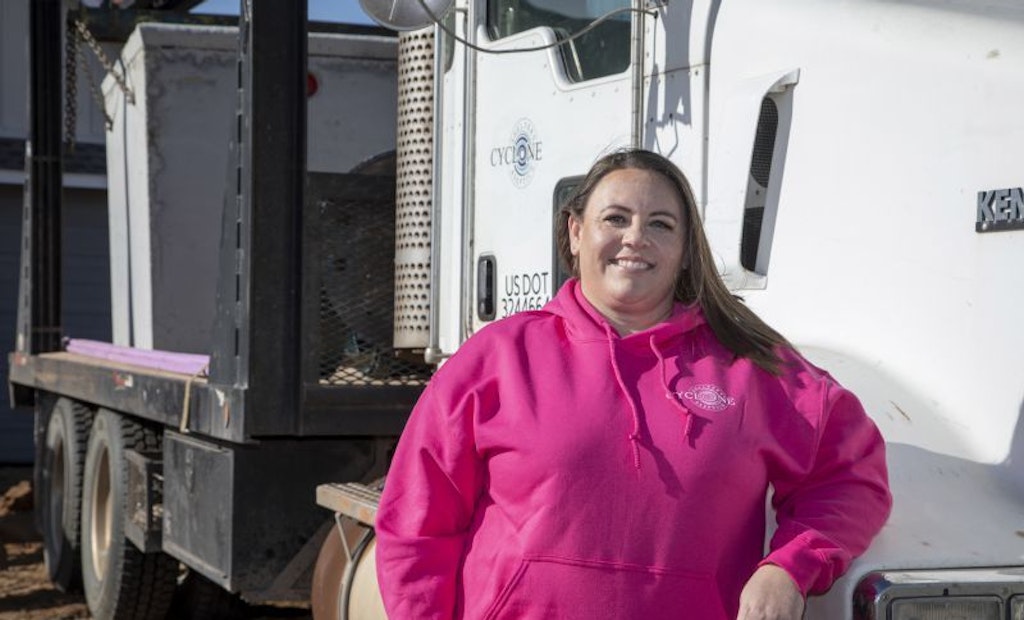
Dawn Rohrs, who owns Cyclone Septics with her husband Michael, says the NuWater extended aeration activated sludge units are easy to install, simple to troubleshoot, and well suited for the many spray distribution systems the company installs.
Interested in Systems/ATUs?
Get Systems/ATUs articles, news and videos right in your inbox! Sign up now.
Systems/ATUs + Get AlertsCyclone Septics installs about 150 onsite treatment systems per year in central Oklahoma. About 90% of them use aerobic treatment units.
The company, based in Guthrie, about 20 miles north of Oklahoma City, relies exclusively on NuWater extended aeration activated sludge units from Enviro-Flo. In fact, the company manufactures the concrete tanks for the systems.
Dawn Rohrs, who owns Cyclone Septics with her husband Michael, says the systems are easy to install, simple to troubleshoot, and well suited for the many spray distribution systems the company installs.
Demand for advanced treatment systems has expanded in recent years as the population in and around Oklahoma City has increased with affordable home prices and a growing medical marijuana industry.
The extended aeration process in NuWater systems is a modification of the activated sludge process in which microorganisms remain in the treatment process for long periods. The large inventory of biological solids provides a buffer against shock loading of organic matter.
The long aeration period enables the organisms to consume themselves, reducing the total amount of solids generated by the treatment process. Aerobic bacteria are primarily responsible for degrading the organic matter; therefore the transfer of oxygen into the wastewater is critical.
The aeration also helps mix the wastewater to provide contact between the organic contaminants and the microorganisms. For this reason, the NuWater activated sludge process is classified as a suspended growth system.
The NuWater system achieves treatment by a flow-through process. Wastewater first enters a pretreatment chamber where solids settle, and then passes to an aeration chamber through an opening below the flow line.
The aeration chamber provides a retention time of 22 hours at design flow. Air is added by two diffusers at the bottom of the aeration chamber. The release of air causes the wastewater to rise in the chamber, establishing a circulation pattern.
From the aeration chamber, the wastewater passes by hydraulic displacement into a clarification chamber through a slot in the bottom of the wall between the two chambers. The quiescent design of the clarification chamber allows gravity settling of the solids.
The bottom of the clarification chamber is sloped to help direct settled solids back toward the opening between the two chambers. The hydraulic roll created by the air system in the aeration chamber helps draw settled solids from the bottom of the clarifier back into the aeration chamber.
The NuWater units are tested to internationally recognized performance standards. The aerator is the only electrical component. Units can produce effluent containing less than 2 mg/L CBOD5 and TSS.
Enviro-Flo also offers the Salcor UV disinfection system, which provides biological treatment without the addition of chemicals. It reduces fecal coliforms to an average of less than 70 cfu/100 mL.
Read more about Cyclone Septics in the May issue of Onsite Installer.





